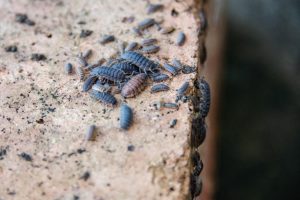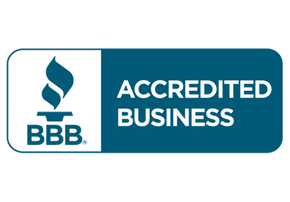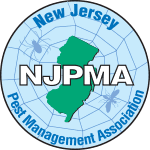PILLBUGS CONTROL

Pillbugs are isopods, a non-insect arthropod also known as terrestrial crustaceans. They are also called roly-polys due to their ability to roll into a ball when disturbed. Pillbugs are nocturnal, though during the day they can be found in dark, humid places such as under fallen leaves, rocks, or logs. They are terrestrial crustaceans that live their entire lives on land. Pillbugs feed mainly on decaying plant leaves and other decomposing materials.
Pillbugs are about ¾” in length, they are dark brown to black or gray. Their bodies are oval-shaped with an armor-like shell made of seven hard plates, two antennae, and seven pairs of legs.
Not sure if you have a pillbugs problem? Or maybe you want to learn more about how pillbugs control works. Check out the following information to clarify some questions you may have.
Library Shortcuts
- Should I be concerned about pillbugs?
- Signs of a pillbug infestation
- Why do I have pillbugs on my property?
- Can I get rid of pillbugs myself?
- Tips to prevent pillbugs
Should I be concerned about pillbugs?
Pillbugs are a very important part of a healthy garden ecosystem and are generally valuable helpers in cleaning up garden waste. Pillbugs do not bite, sting, or carry any harmful diseases. They do not damage household items or deposit eggs indoors either. However, most homeowners simply consider this pest a nuisance since it may damage the roots of plants when feeding.
Pillbugs rarely live long indoors, the indoor environment is too dry for them and they usually die after coming inside, but they may infest your garden or greenhouse.
Signs of a pillbug infestation
Pillbugs are nighttime feeders that stay hidden in damp areas most of the time. As It was mentioned before, they don’t usually get indoors; if you see one or two of them inside, it usually means that there is a large population outdoors. Their numbers may increase substantially during years with wet weather. When that happens, pillbug diets turn to garden seedlings and small plants.
The primary sign of pillbug activity in your garden or home is seeing the pests themselves. You can also see signs of activity on plants; pillbugs chewing leave plants looking like a rasp scraped the outer layer.

Why do I have pillbugs on my property?
As mentioned before the presence of these pests in the house usually points to an outdoor infestation, as large populations may move indoors looking for alternative food and shelter. Heavy rainfall during spring and early summer can also drive them inside. This pest is attracted to decaying vegetable matter, such as food in your trash and even the mulch around your home. Yards with excessive moisture and debris often harbor pillbugs.
Can I get rid of pillbugs myself?
Most Pillbugs go unnoticed until you disrupt their hiding places and find a mass of these pests feeding on decaying plant debris. If you happen to find them in your yard you should try to reduce the habitat favored by these pests by eliminating garden debris, leaf piles, fallen fruit, and weeds from all growing areas. If you need to get rid of pillbugs that have already entered your home or building, a vacuuming cleaner can aid in their removal. If the problem continues you probably need professional pest control services.
Tips to prevent pillbugs
Since pillbugs need a moisture environment, the best thing to do to prevent them is to reduce the moisture around your property; try the following tips in order to do so:
- Pull mulch away from the home’s foundation. A “dry zone” of 6 to 12 inches around the foundation will discourage pill bugs and other pests. You can also use mulches that are coarse enough to let water pass through easily so the surface next to plants will not remain damp for long.
- Firewood should be as far away from the house as possible.
- Don’t allow water to accumulate near the foundation or in the crawl space. Gutters and downspouts should drain away from the foundation.
- Flowerpots should be on racks or stand off the ground.
- Be conscious of overwatering plants.
- Trim tree limbs if they cause a damp shady area near the home.
- Crawlspace vents should be unblocked to allow air circulation.
- Repair leaking faucets, water pipes, and air conditioning units.
To prevent pill bugs from entering your home, seal cracks and openings in the outside foundation wall, and around the bottoms of doors and basement windows. You can also install tight-fitting door sweeps or thresholds at the base of all exterior entry doors, and apply caulk along the bottom outside edge and sides of door thresholds.
Want a Free Estimate?
Need to Schedule Service?
Have a Questions?
WHAT WILL WE DO?
Our pillbugs control process typically consists of the following stages:
- Confirm or discard the existence of pillbugs in your home through an inspection.
- Identify the factors that may be causing and contributing to the infestation.
- Offer pest control programs to get the problem under control.
- Treat the existing population and prevent future infestations.
What our clients are saying
Our Partners and Awards
Service area
New Jersey:
Ocean County
Essex County
Passaic County
Morris County
Hudson County
Bergen County









